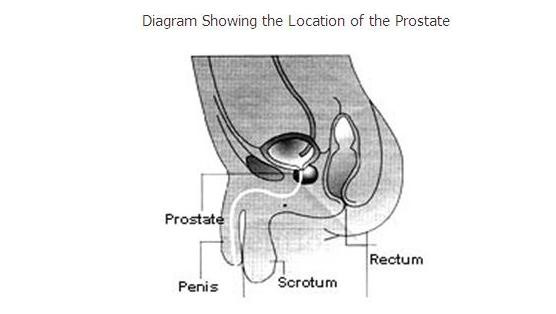- UGF2,3 Subhash Complex, Tulsidas Marg, opp. Charak Diagnostics Mandi, Chowk, Lucknow, Uttar Pradesh 226003
- Emergency Call: 09794540005 , 09919194111
Enlarged Prostate
Enlarged Prostate (BPH)
The prostate is a small, chestnut-shaped gland in the male reproductive system. Only men have a prostate. The prostate gland produces fluid that carries sperm during ejaculation. The prostate gland surrounds the urethra, the tube through which urine passes out of the body.An enlarged prostate means the gland has grown bigger. Prostate enlargement happens to almost all men as they get older. As the gland grows, it can press on the urethra and cause urination and bladder problems.
An enlarged prostate is often called benign prostatic hyperplasia (BPH). It is not cancer, and it does not raise your risk for prostate cancer.

Causes :
The actual cause of prostate enlargement is unknown. Factors linked to aging and changes in the cells of the testicles may have a role in the growth of the gland. Men who have had their testicles removed at a young age (for example, as a result of testicular cancer) do not develop BPH.
Some facts about prostate enlargement :
- The likelihood of developing an enlarged prostate increases with age.
- BPH is so common that it has been said all men will have an enlarged prostate if they live long enough.
- A small amount of prostate enlargement is present in many men over age 40. More than 90% of men over age 80 have the condition.
- No risk factors have been identified other than having normally functioning testicles.
Symptoms :
Less than half of all men with BPH have symptoms of the disease. Symptoms may include :
- Dribbling at the end of urinating.
- Inability to urinate (urinary retention).
- Incomplete emptying of your bladder.
- Incontinence.
- Needing to urinate two or more times per night.
- Pain with urination or bloody urine (these may indicate infection).
- Slowed or delayed start of the urinary stream.
- Straining to urinate.
- Strong and sudden urge to urinate.
- Weak urine stream.
Treatment for Benign Prostatic Hypertrophy (BPH)
Just because the prostate is enlarged, it does not need to be treated. If your symptoms are mild, you may not need any treatment at all. If your symptoms are severe, or if the result of the tests shows that the urinary tract is significantly affected, you must under-go early therapy.
Depending upon the severity of your symptoms, several treatment options are available. Your urologist will discuss these options with you before deciding on any one method:
- Medical Management : These are suitable only for mild symptoms and when the degree of obstruction is not severe. These medications have to be taken life-long, and have a proven benefit of only 20-30%. Depending upon the drug used, you may experience minor side effects. Drugs such as 5 alpha-reductase are supposed to act by reducing the size of the enlarged prostate over a long-term period. These, however, are not suitable for all types of prostates. Other drugs, such as alpha-blockers, relax the smooth muscle component in the region of the prostate and partially open up the passage. These provide only symptomatic relief.
- Surgical Management : is currently the best method of treatment. A surgical procedure called TURP is performed:
- TURP (Transurethral Resection) : TURP is a procedure used to resect the prostate that may be enlarged due to benign prostatic hypertrophy (BPH). During TURP, an endoscope is inserted through the penis into the urethra (the urinary passage), and the innermost core of the gland adenoma is removed. This widens the passage and relieves the compression on the urethra. This may be likened to removing the meat of an orange while leaving the skin intact. The operation takes about half an hour to two hours, with no incision on the skin.
- The possible post-operative effects of this surgery, in some cases, may include :
- About 50% of patients experience failure to ejaculate after intercourse, as the semen is pushed backwards into the bladder,instead of to the outside.
- Very rarely, some people experience leakage of urine either upon straining or continuously.
- About 2% of patients may experience transcend or permanent impotence.
- It is the latest modality used in the management of Enlarged Prostate. In this procedure, a 550 Micron Fibre attached to a 100-Watts Holmium Laser machine is used to remove obstructive prostatic tissue and seal blood vessels. The enucleated gland is then pushed into the bladder, which is later sucked out with the help of an equipment called Morcellator. The whole procedure takes around 45-90 minutes, depending on the size of the gland. This procedure is nearly bloodless as the laser beam when cuts the gland also seals the blood vessels. In most of the cases there is no need for blood transfusion. At the end of surgery, a catheter is inserted to keep the bladder in place. It continuously drains the urine into a sterile collection bag. The catheter is usually kept for 24 to 48 hrs and the patient is discharged without catheter after giving a catheter free trial.
All tissue removed at the time of surgery will be sent for examination to confirm the benign nature of the gland. Very occasionally, a surprise report of the presence of malignancy may be obtained.
Treatment for BPH does not eliminate future incidence of prostate cancer, as this originates in an entirely different portion of the gland. Therefore, an annual evaluation may still be considered important for men who have undergone surgery for benign prostate gland enlargement.
Laser Enlarged Prostate (BPH) Treatment

Holmium Laser Enucleation of Prostate (HoLEP) :


